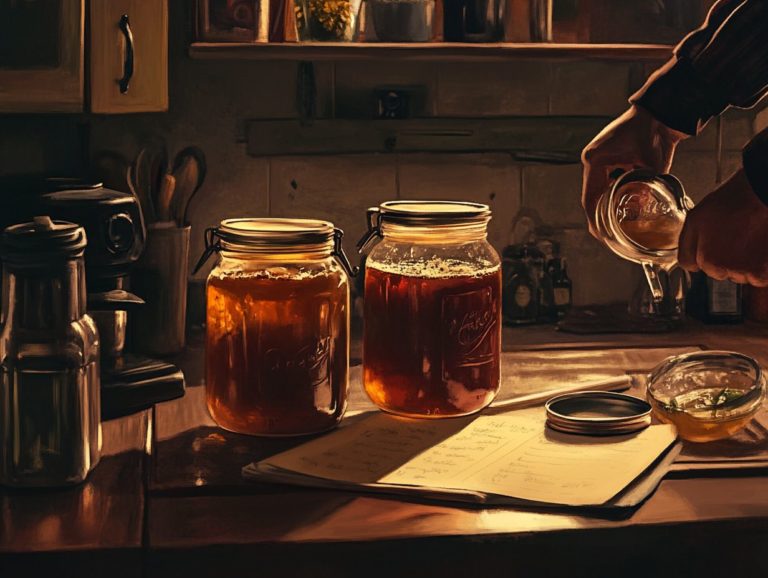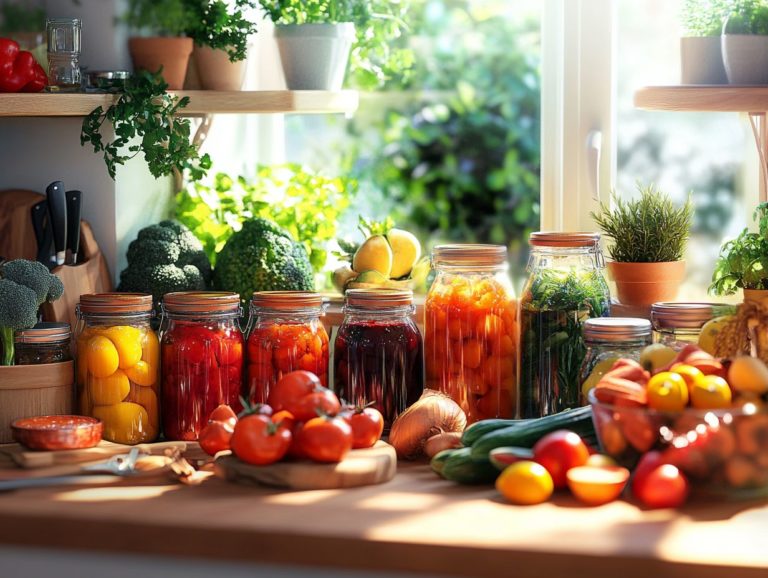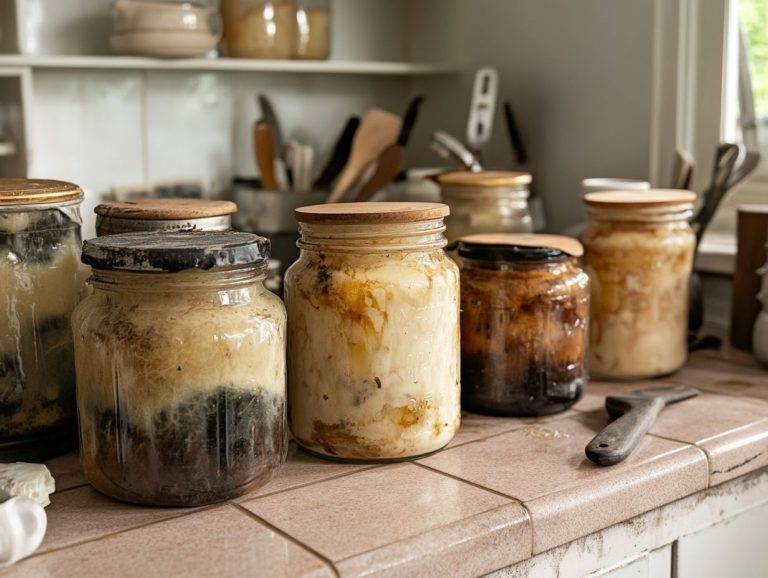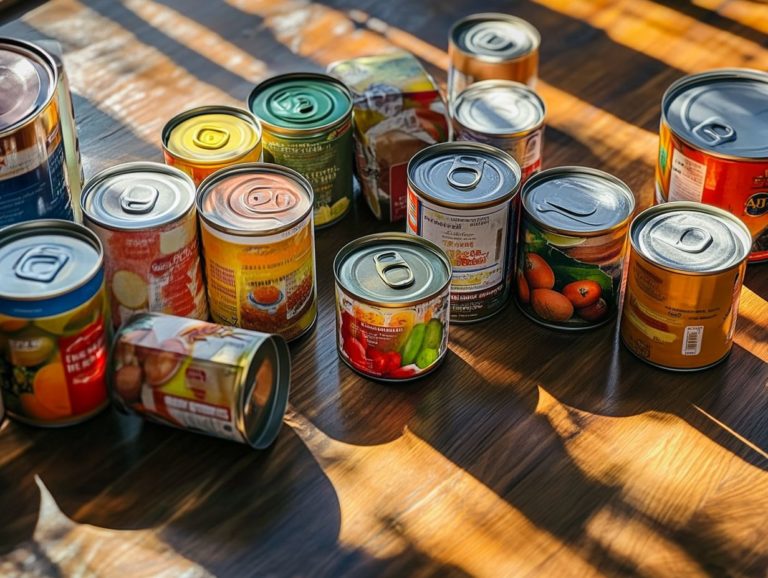What to Do If Your Canner Malfunctions
Canning is a gratifying method to preserve your favorite foods. However, when your canner decides to malfunction, it can quickly turn into a source of frustration and potential danger.
This guide helps you navigate the common causes and types of canner malfunctions. By identifying warning signs and taking necessary safety precautions, you can keep your canning experience safe and enjoyable.
From tackling DIY repairs to knowing when it s time to call in a professional, this information equips you with the expertise needed.
Contents
Key Takeaways:
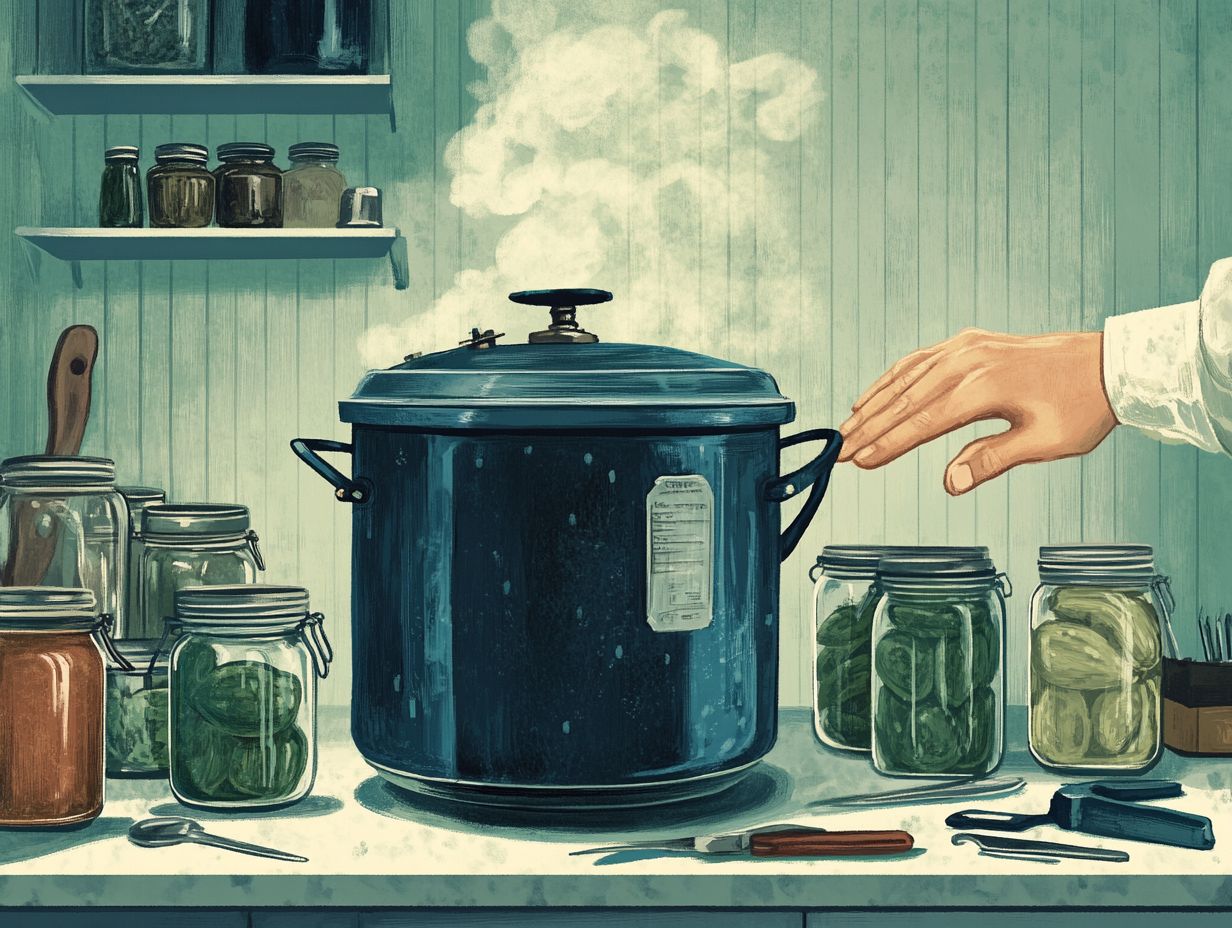
- Be aware of common causes and types of canner malfunctions to prevent accidents and injuries.
- Immediately take safety precautions if your canner malfunctions, such as turning off the heat source and releasing pressure.
- Know when to seek professional help for severe malfunctions to ensure your canner is fixed safely and properly.
Understanding Canner Malfunctions
Knowing how canners can fail is vital for anyone canning at home. It directly affects how safe and tasty your preserved food is!
While canning is a cherished tradition, it carries inherent risks that can result in food contamination if not carefully monitored. By identifying common canning mistakes, such as using incorrect procedures or relying on faulty equipment, you can learn to troubleshoot and prevent potential issues during food preservation.
This guide illuminates the types of canner malfunctions you might encounter and provides effective solutions for addressing them.
Common Causes and Types of Malfunctions
Common causes of canner malfunctions typically arise from improper sealing, faulty equipment, or minor cooking missteps during the canning process.
These problems may cause steam leaks. A loose lid allows steam to escape, which can spoil your food. Unsealed jars are another challenge; they occur if the rim isn t clean or if food is packed too tightly. Improper sealing and boiling water methods jeopardize food safety, putting your preserved goods at risk for spoilage or contamination.
To prevent these pitfalls, it s essential to adhere to recommended guidelines, regularly inspect your equipment for wear and tear, and maintain a high standard of cleanliness during preparation. Simple precautions can truly elevate your canning experience, ensuring that you create safe, shelf-stable food worthy of any pantry.
Safety Precautions
Safety first! Implementing precautions while canning protects both your food and your loved ones!
Prioritizing these precautions not only enhances the final product but also safeguards the well-being of everyone involved in enjoying the food you make.
Preventing Accidents and Injuries
To avoid accidents while canning, stick to kitchen safety rules. Stay aware of the risks involved in the process!
For a safe canning experience, utilize equipment like specialized pots that create pressure to preserve food and water baths properly. Before you begin, familiarize yourself with the specific techniques and recommended practices for the method you’ve chosen.
Common cooking mistakes, such as improper sterilization of jars or inadequate sealing, can lead to dangerous situations. Therefore, following canning instructions meticulously is crucial. Don’t overlook safety precautions like wearing gloves when handling hot jars and checking the integrity of seals afterward.
By embracing these practical tips, you can significantly reduce the risk of accidents and maintain food safety.
Identifying a Malfunctioning Canner
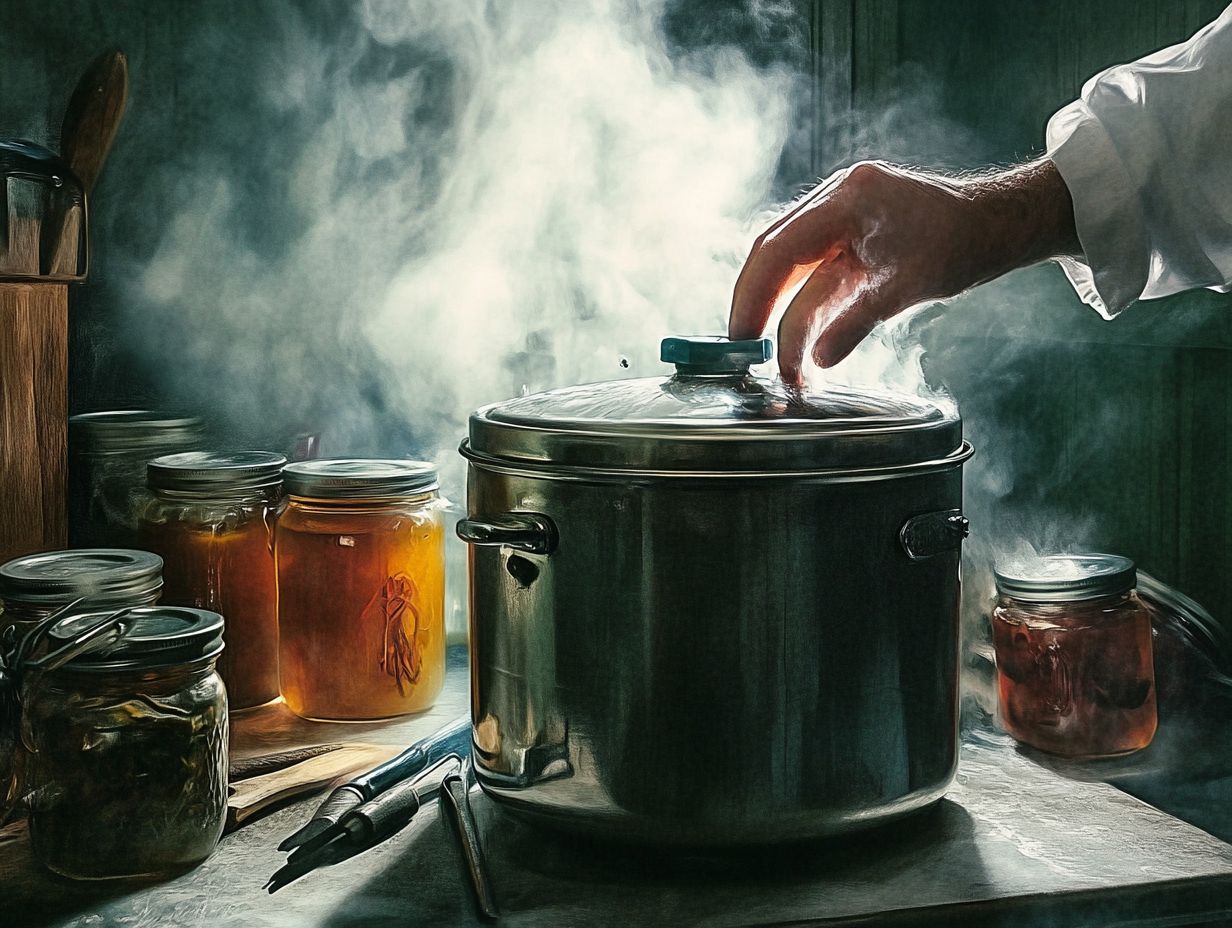
Identifying a malfunctioning canner is crucial for anyone committed to preserving food safely. Recognizing the early signs and symptoms can help you prevent degradation in food quality and avoid potential health hazards.
Stay safe and happy canning! Your delicious homemade food deserves it!
Signs and Symptoms of Malfunction
Signs and symptoms of a malfunctioning canner can be quite telling. You might notice visible steam leaks or hear unusual sounds.
Unsealed jars could signal serious concerns about food contamination. Pay close attention to fluctuations in pressure indicators and unsteady temperature readings.
A complete failure to build pressure is also a warning sign. These issues not only jeopardize the sealing process but can lead to improperly preserved food, risking foodborne illnesses.
Recognizing and addressing these issues promptly is essential. Ignoring them could make your canning effort pointless.
Keep your canner in top shape with regular maintenance checks. Immediate attention to any irregularities will help ensure your canner runs smoothly.
Steps to Take When Your Canner Malfunctions
When your canner malfunctions, it’s essential to act swiftly to safeguard both your safety and the quality of your preserved food. Knowing what to do when your canned food spoils can be crucial in these situations.
Failing to address these issues promptly can lead to considerable food safety risks that you definitely want to avoid.
Immediate Actions to Ensure Safety
Immediate actions to ensure your safety after a canner malfunction include halting the canning process, carefully removing the jars, and assessing both their condition and the contents within.
Once you’ve gently taken the jars out of the canner, inspect them for any signs of unsealing or compromised seals. If you find jars that are unsealed, refrigerate them immediately to prevent spoilage.
For any contents that require reprocessing, bring them to a rolling boil for the appropriate duration before resealing. Always prioritize your personal safety by donning protective gloves and working in a clean environment.
By following these steps, you can maintain food safety and preserve the quality of your home-canned goods.
Fixing a Malfunctioning Canner
Fixing a malfunctioning canner typically requires a blend of DIY repairs and targeted troubleshooting tips that align with the specific issue at hand.
This approach is essential for maintaining the safety and effectiveness of your food processing endeavors.
DIY Repairs and Troubleshooting Tips
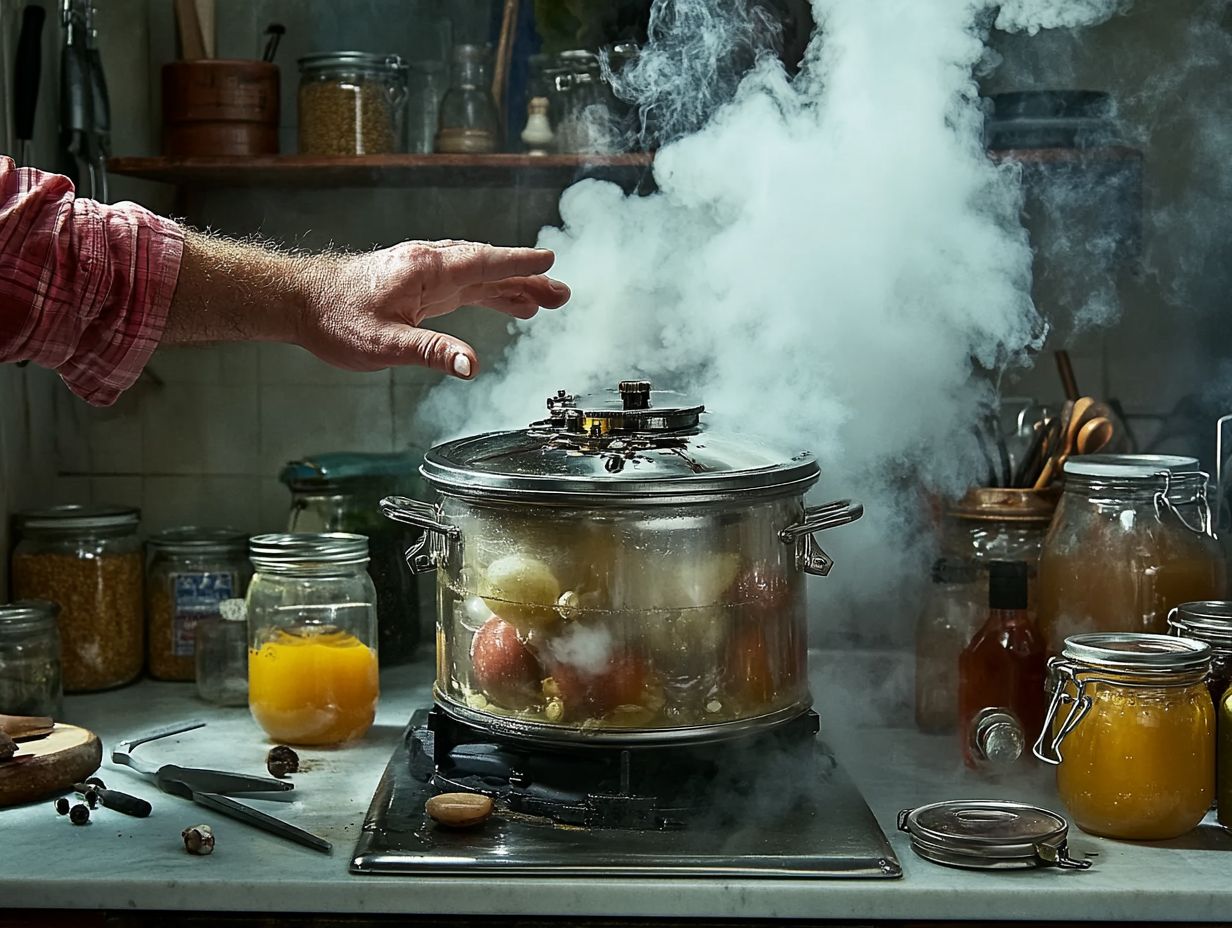
Start by checking for steam leaks and ensuring that jars are sealed properly. Verify that your pressure canner is calibrated just right a pressure canner is a special pot designed to preserve food under high pressure.
These foundational steps are essential for the canner’s functionality and preserving the integrity of the food you’re working hard to store.
Routine inspections of the rubber gaskets for wear and tear are crucial. Don t forget to clean the vent pipe to prevent clogs that could lead to malfunctions.
Monitoring those temperature settings is vital for ensuring that your food reaches the necessary safety thresholds. By adhering to established canning techniques, you significantly reduce the risk of spoilage and contamination.
Understanding the proper pressure and timing during the canning process can help prevent potential future issues. This ensures that every canning experience is a successful one.
When to Seek Professional Help
Recognizing the moment to enlist professional assistance when your canner experiences a significant malfunction is essential for preserving food quality and upholding safety standards.
This is especially important if your attempts at DIY repairs have not yielded results.
Recognizing Severe Malfunctions and Seeking Assistance
Recognizing severe malfunctions in your canner is crucial for avoiding canning errors and safeguarding food safety, especially when faced with ongoing pressure problems or significant leaks.
Stay attuned to additional warning signs, such as inconsistent temperature readings or improper sealing. These issues can compromise the preservation of your food. If your canner starts emitting unusual noises or displays an error code, take it as a clear signal that you need expert help.
Addressing these concerns promptly is vital. Neglecting these issues leads to unsafe conditions and potential spoilage or contamination.
Ensuring everything operates smoothly not only extends the shelf life of your food but also protects you from health hazards. This underscores the importance of vigilant monitoring.
Frequently Asked Questions
What to Do If Your Canner Malfunctions?
If your canner malfunctions, address the issue immediately to ensure the safety and quality of your canned food. Additionally, if you encounter a broken jar, it’s important to know what to do if your canning jar breaks. Here are some steps you can take:
What are the common signs of a malfunctioning canner?

Common signs of a malfunctioning canner include leaking, improper sealing, pressure fluctuations, and strange noises. If you notice any of these, stop the canning process and address the issue.
How do I troubleshoot a malfunctioning canner?
The first step is to carefully examine the canner for any visible issues. If there are none, check the manual for troubleshooting tips or contact the manufacturer for assistance. It s also helpful to have a spare canner on hand for emergencies.
What should I do if my canner is leaking?
If your canner is leaking, do not continue the canning process. Empty the canner and check for any cracks or damage. If the canner shows no damage, ensure the lid is properly sealed and the gasket is in good condition. If the issue persists, contact the manufacturer for further assistance.
Want to prevent canner malfunctions? Here s how!
Regular maintenance and proper use can help prevent canner malfunctions. Follow the instructions in the manual and perform routine maintenance, such as checking the gasket and replacing it when necessary.
Is it safe to consume food from a malfunctioning canner?
If your canner malfunctions during the canning process, you must discard any food that hasn’t been properly canned to protect your health! If the canner malfunctions after the canning process, carefully inspect the food for any signs of spoilage before consuming.

